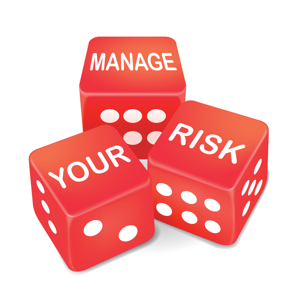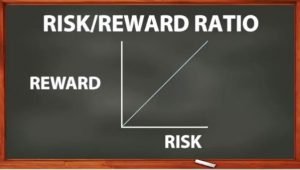The Importance of Risk Management
This is part 2 of my blog series: The Art & Science of Risk Management

As suggested in my first post, with every decision we make (or don’t make) to achieve an objective has an associated element of risk, a deviation (up or down) from what we expect. We are not fully aware of the risks around us because we feel that managing risk correctly is too onerous or that our natural ways of managing risk in life is sufficient. With enough practice however, we may learn to manage risk in such a way that it brings added value to our lives without it being onerous. Managing risk is simply a mental exercise and there are ways of doing it effectively (explained here and more in the next post). Managing risk correctly requires a change in thought process from our natural ability, our instincts, to one that is more structured and comprehensive. How does this add value to our lives, you might ask? Well it does so in many ways such as:
Preparing for the unexpected downturns
I gave the example in this post about being late for a party, a long way away, and the ensuing FOMO, leading you to drive above the speed limit. In this scenario, because of FOMO, you’re engaging in risky behavior and thus preparation for the unexpected downturns is necessary. The way you can do that is by calling a friend already at the party to find out if there are any road blocks, speed traps, pot holes, etc. You should also prepare for the worst – do you have all the equipment you need to replace a flat tire; do you have a first aid kit in your vehicle? Generally, if you engage in any activity that could be perceived as riskier than those in your normal day-to-day, then as a professional risk manager I encourage you to consider the risks. What are the risks? Which ones will you accept, which ones will you try to avoid or mitigate? How will you control them? There may even be simple solutions to avoid or mitigate the risk.
Painting the full picture
To manage risk correctly we must have a clear picture of the gain of action toward an objective with an equally clear picture of the gain of inaction. It can be sometimes difficult to foresee the effects of the choices we make - in fact it is the primary reason why we make the wrong ones. Let say you’re overweight and you have a desire to lose it all. In this example, the gain of inaction is clear; you already know what being overweight feels like (its crap). The gain of action however is difficult to foresee; although you might think you know what it feels like to be in shape, you don’t really know for sure else you would already be in shape. Try to visualize what the future holds, try to feel it. Close your eyes and try to imagine what being in shape means to you and then ask yourself: is it worth the effort? I say hell yes.
Of course, being good at visualizing an alternate reality takes practice and often we must do it several times even over a single action (you will have to regularly remind yourself the value that being shape brings to your life while you’re training).
Knowing our limits
Risk management ensures that we find the appropriate balance of risk and reward. Ideally, every choice we make is optimized i.e. for the same the level of risk we choose the best reward and equally for the same reward we choose the lowest risk. In reality, however, we know this not to be the case because, again, foreseeing the effects of our every move is difficult (remember, painting the full picture helps!). Another difficult task is to know our limits i.e. how do we choose between low risk with potentially low reward and high risk with potentially high reward?

The choices we make have different risk-reward combinations and we can approximate all of life’s choices by the linear trend above. We now need to decide where we are on that trend i.e. we must decide on our risk appetite. Are you a risk-taker or are you cautious? Regularly asking yourself this question is critical as the answer is needed first before we can ever hope to optimize the risk-reward decision.
A ship in harbor is safe, but that is not what ships are built for – John A. Shedd
Only those who will risk going too far can possible find out how far one can go – T.S. Eliot
If you are not willing to risk the unusual, you will have to settle for the ordinary – Jim Rohn
There is nothing wrong with ordinary. I’m ordinary and I love my life. The major risk for me is the risk of regret that I chose an ordinary life. But, if I can manage it correctly, by accepting that I’m a cautious individual and by embracing life’s simple pleasures, I will continue to be happy. For others, being cautious and ordinary is not what they’re built for. I say to them, you can still manage your risk even after having taken the biggest risks – prepare for the worst, paint the full picture, know your limits, reevaluate your expectations, integrate your thinking and pay attention to risk advice.
Reevaluating our expectations
Managing our expectations is part of the risk management process and it requires us to be honest with ourselves. If we do not manage our expectations correctly we will end up being very disappointed when our expectations are not met. In addition, if our expectations are wrong then naturally our perception of risk is wrong, which can be dangerous. This is why it is absolutely critical to take the time to reevaluate our expectations on a regular basis.
I do what I feel is right. I am not scared to walk on the new path and take risk - Aamir Khan
Managing our expectations properly may help us better deal with risk events. For those who live dangerously, if by embracing in advance the possibility that something might go wrong it may reduce the severity. From “why did this happen to me” to “I knew what to expect. I was aware of the risks. I chose to accept the risk because that’s life and this is how I choose to live it”.
Integrated thinking
A single choice we make toward an objective may have several risks associated and these may be related to one another. In this instance, we must view the risks as a whole rather than each of them individually – risks that are related can either cancel each other out or compound the effects. This thinking is exceptionally useful in an organization, especially banks, but can also be useful in life. “Don’t put all your eggs in one basket” as they say, an expression that comes from the diversification benefits of risks that when viewed as whole are lower than the sum of their parts. Examples of compounded effects, of mixing drinks and illegal substances, include driving while intoxicated. Viewing risk as a whole does not only provide a better measurement of the risks in a choice but is also less onerous on the mind (it’s easier to think about the dangers of driving while intoxicated then to think about the dangers of drinking, the dangers of driving above the speed limit, the dangers of breaking the law, etc).
Integrated thinking needs to apply to our objectives as well because our objectives may compete with one another. We might have the objective to build a thriving business from scratch and at the same time we might also have the objective to raise a wonderful family. Both objectives however require an incredible amount of time and effort. It is important to manage the risks associated with each objective and those arising from the relationship between the two.
From risk awareness to risk communication
Referring to this post I wrote, even if we are the best at managing risk it doesn’t hurt to receive additional advice from those that are more experienced in a specific field. Learning from others may bring a lifetime of added value. I encourage you to share your risk experience because just one piece of advice can mean the difference between life and death.
Next up – Ways to Manage Risks
Your Risk Connoisseur
J-MLN